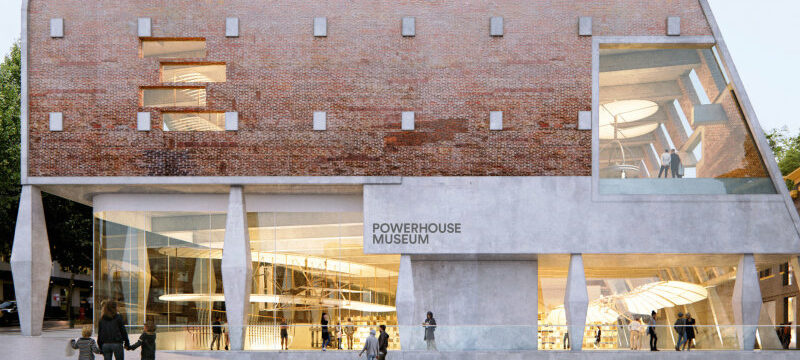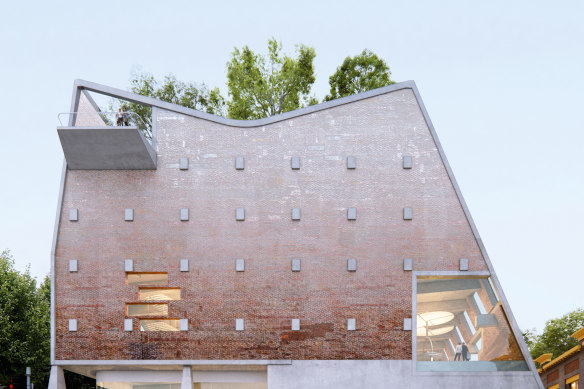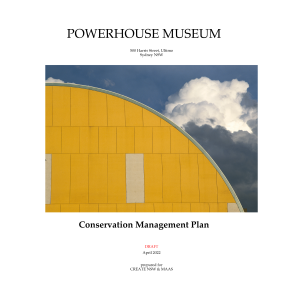Save articles for later
Add articles to your saved list and come back to them any time.
A $500 million redevelopment of the Powerhouse Museum at Ultimo is under a cloud after a long-hidden report surfaced that recommended state heritage listing of parts of the museum now slated for demolition later this year.
This masthead has obtained a copy of the draft report by eminent heritage consultant Alan Croker whose firm’s contract ended shortly before he could officially deliver his final draft.
He found significant parts of the 1988 museum extensions deserved conservation and protection.
The design of the new Powerhouse Ultimo by Durbach Block Jaggers.Credit: Courtesy DBJ/The Powerhouse
Croker’s draft conservation management plan shows the site was of historical and exceptional cultural significance for its collection of 19th-century historic buildings on the site of the first power station constructed for Sydney’s electric tram network and its later adaption in 1988 as a museum precinct.
These findings were not included in the planning documents used to justify the redevelopment of the Ultimo museum for a new main entrance, reoriented to the Goods Line and new public square, rooftop gardens, and multi-storey annex running the length of Harris Street across its forecourt.
The “renewal” plans are now being finalised by the winning architect team, Architectus, Durbach Block Jaggers Architects, Tyrrell Studio, Youssofzay + Hart, Finding Infinity and Arup.
The plans require the demolition of the arched galleria constructed when the former power station was converted into Australia’s iconic science, applied arts, and technology museums.
Croker rates the galleria that references the Garden Palace, which burnt to the ground in 1882 and housed the museum’s foundation collection, as being of exceptional significance, the half-arched building on Harris Street, less so.
Cover sheet of the Conservation Management Plan.
Croker’s contract was believed to have been terminated days before finalising the report in April 2022 that confirmed the “Powerhouse Museum in its setting reaches the threshold for state significance”.
That report found the existing Powerhouse was historically significant as one of the first adaptive reuse of large industrial structures for cultural uses in Australia.
The conversion of the former Power House and Tram Depot to designs by architect Lionel Glendenning was highly significant for setting new benchmarks for post-modern architecture, adaptive reuse, museology, museum standards, sustainability, and heritage conservation.
And the museum was a marker of a period of reform and change to mark the Australian Bicentenary in NSW under the direction of former premier Neville Wran.
”The Powerhouse Museum is unique as a former industrial precinct,” the draft report said. “The design philosophy for the museum is unique for celebrating the origins of the institution it would serve.”
In his draft assessment, Croker found that fragmented views of the Powerhouse caused by surrounding development, a weak museum identity due to confusing external signage, and blandness of illumination had affected the landmark qualities of the museum and its ability to be read as a museum precinct.
The conversion of the Touring Exhibition Hall on Harris Street into a black box space gave no hint of an iconic museum. The sunken rear courtyard had become a dungeon-like space.
But changes needed to be respectful of the museum’s origins and its place at Ultimo, Croker found.
Create NSW, Arts Minister John Graham and the report’s author were approached for comment.
A cultural guide to going out and loving your city. Sign up to our Culture Fix newsletter here.
Most Viewed in Culture
From our partners
Source: Read Full Article


